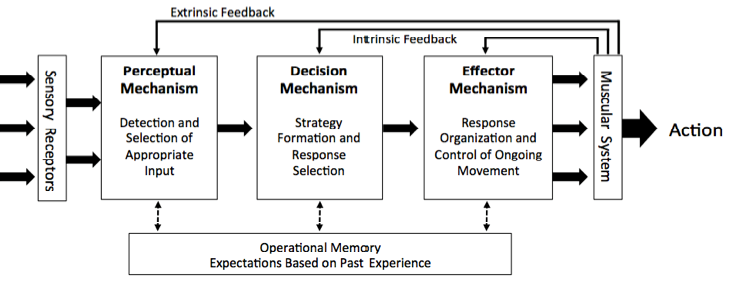Optimizing Visual Performance for Sport – Part 1
Posted by EyePromise on Nov 25th 2019
The role of visual performance factors in sports has received a fair amount of attention over the years, but many athletes still have limited access to evaluation and enhancement approaches. In this series, Graham Erickson, OD, FAAO, FCOVD, discusses ways to assess vision and visual processing, how to train for improved sports vision, and the impact nutrition can have on this skill.
Competitive athletes are continuously searching for ways to elevate their performance in their sport. Most of the focus is on the development of requisite physical abilities, such as strength, speed, agility, and endurance. The other major focus is on skill development for specific sport applications, often requiring significant repetition with feedback about optimal biomechanics. Depending on the sport, athletes also may work on the psychological issues that can impede or enhance performance.
Assessment Options
First, the process of optimizing vision and visual processing skills begins with a reliable evaluation of those factors that are identified as valuable for relevant sport tasks. Since the visual demands critical to success in sports can vary tremendously, a thorough visual task analysis should be conducted for each sport and position. Effective visual performance evaluation helps to identify what visual factors would provide the most benefit from enhancement.
The professional literature is rich with studies that demonstrate that high-achieving athletes perform better than non-athletes or lower-performing athletes on various measures of visual, perceptual, cognitive, and motor abilities. Studies have concluded that higher-achieving athletes are better able to detect perceptual cues, make more efficient eye movements, and perform better on measures of processing speed and attention, as compared to less accomplished athletes or non-athletes.1,2
The development of visual and cognitive expertise is dependent on the demands of the sports experience of each athlete since these demands can vary across the vast array of sports. For example, depth perception is an important vision performance factor in many sports but may have limited relevance for shooting sports where the athlete sights monocularly.
The vision and perceptual skills often identified as important for sports include static and dynamic visual acuities, contrast sensitivity, stereopsis, accommodative-vergence facility, the span of perception, multiple object tracking, central eye-hand reaction speed, and peripheral eye-hand response speed.3 Some aspects of these visual skills are assessed as part of a routine vision exam, but many are not evaluated for various reasons. It is helpful to classify the areas of assessment in order to better understand how the factors affect performance.
The Welford Processing Model4 is useful for understanding how the critical sporting action output results from the successful execution of lower-level processes. Using this model, the following is an example of classifying assessments into the relevant mechanism:
Perceptual Mechanism
- Visual Acuity
- Contrast Sensitivity
- Dynamic Visual Acuity
- Ocular Alignment
- Stereopsis
- Accommodative Function
- Vergence Function
- Oculomotor Function
- Peripheral Vision
Decision Mechanism
- Speed/Span of Recognition
- Visual Attention/Visualization
- Multiple Object Tracking
Effector Mechanism
- Visual-Motor Reaction Speed (Eye-Hand, Eye-Foot)
- Vision & Balance
- Peripheral Vision Response Speed
- Coincidence-Anticipation
A modified information processing model of skilled performance first proposed by Welford.4
A recent study of professional baseball players found that the sensorimotor abilities are significant predictors of on-base percentage, walk rate, and strikeout rate.5 Furthermore, worse performance has been associated with an increased likelihood of sustaining head impacts during practices and games for US collegiate football players,6 indicating a link between collision avoidance and visual-motor skills. This suggests that these assessments might be useful in proactively assessing concussion risk, as well as potentially measuring recovery of visual performance abilities following a concussive episode.
In the next post, we’ll discuss what sports vision training is and how it can help improve athletes’ ability to succeed.
Author
Dr. Graham Erickson has been on the faculty of Pacific University since 1998 and currently teaches the Vision Therapy, Strabismus/Amblyopia, and Sports Vision courses. He has authored the text Sports Vision: Vision Care for the Enhancement of SportsPerformance, as well as co-authoring the text Optometric Management of Reading Dysfunction, and published chapters and articles in various optometric journals. He lectures internationally on the topics of sports vision, pediatrics, and binocular vision.
Dr. Erickson published a perspective piece related to nutrition and visual performance in Vision Development & Rehabilitation. Find it on page 221.
References
- Mann DT, Williams AM, Ward P, et al. Perceptual-cognitive expertise in sport: a meta-analysis. J Sport Exerc Psychol 2007, 29:457-478.
- Voss MW, Kramer AF, Basak C, et al. Are expert athletes expert in the cognitive laboratory? A meta-analytic review of cognition and sport expertise. Applied Cognitive Psychology 2010, 24:812-826.
- Erickson GB. Sports Vision: Vision Care for the Enhancement of Sports Performance. St. Louis: Butterworth (Elsevier), 2007.
- Welford AT. The measurement of sensory-motor performance: survey and reappraisal of twelve years progress. Ergonomics 1960; 3:1,89-230.
- Burris K, Vittetoe K, Ramger B, et al. Sensorimotor abilities predict on-field performance in professional Scientific Reports 2018; 8:116. DOI:10.1038/s41598-017-18565-7
- Harpham JA, Mihalik JP, Littleton AC, et al. The effect of visual and sensory performance on head impact biomechanics in college football players. Annals of Biomedical Engineering 2014, 42:1-10.

